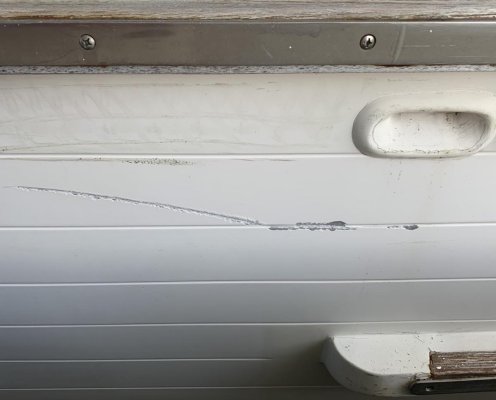First, fully sand the inside of that crack, open it up if you can’t get every last part of it. Then sand the surrounding gel coat with say 100 grit, roughly 4 to 5 inches outside the scratched area. Now get some color matched gel coat, with wax. Fill the crack just barely below the surface and let it set, then lightly sand it again, you should be smooth and just slightly below the level you want. Mask everything that has not been sanded. Get a preval sprayer, thin until it will,spray and spray the crack, letting the overspray blend with the surrounding gel coat. Spray just proud of the surface. Now progressively sand with every grit until 1000 and switch to compound to finish polishing with a buffer.
If you just fill the crack without blending, you will always see the transition edge, whether your gel is perfectly matched or not.
It’s hard to explain the subtle parts, and there are a lot of them, but also not rocket science. Color matching the gel is the hard part, even when you have the correct gel color as every side of your boat will be a different color because of the sun and fading, which is why blending the repair is 100% necessary.
Get a good gel coat guy and pay him whatever he wants, or learn yourself. You will never get a good outcome from somebody trying to do an economical repair. It requires skill and patience that don’t come in the same box with the average repair guy.



